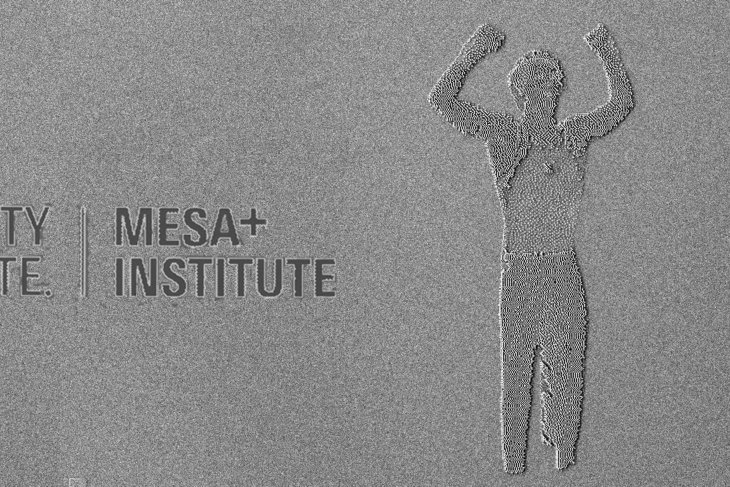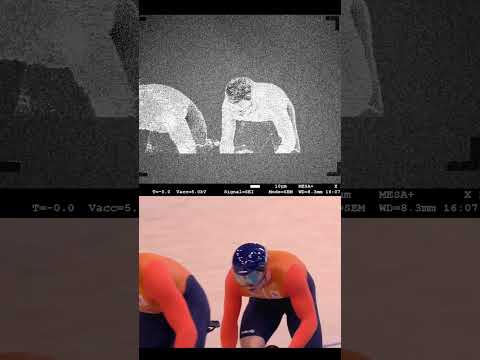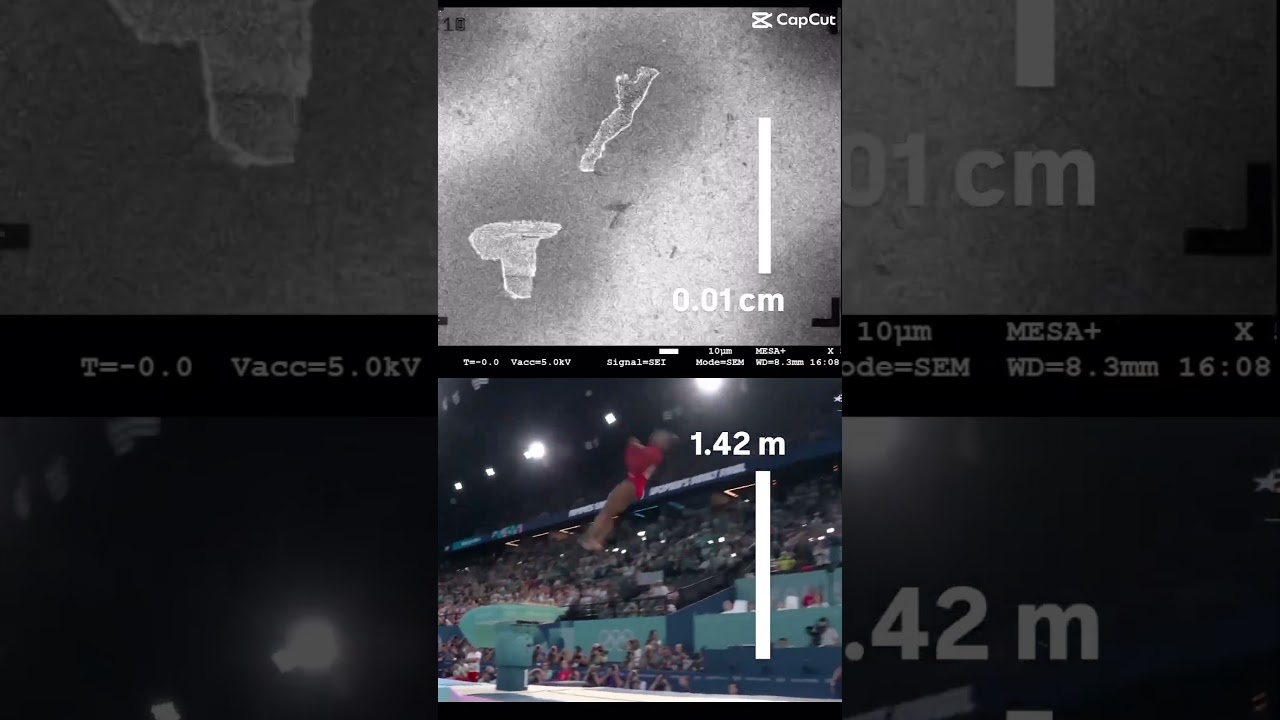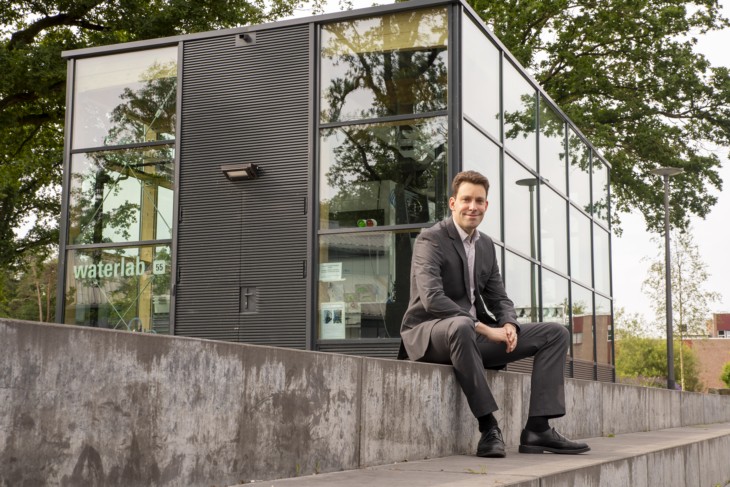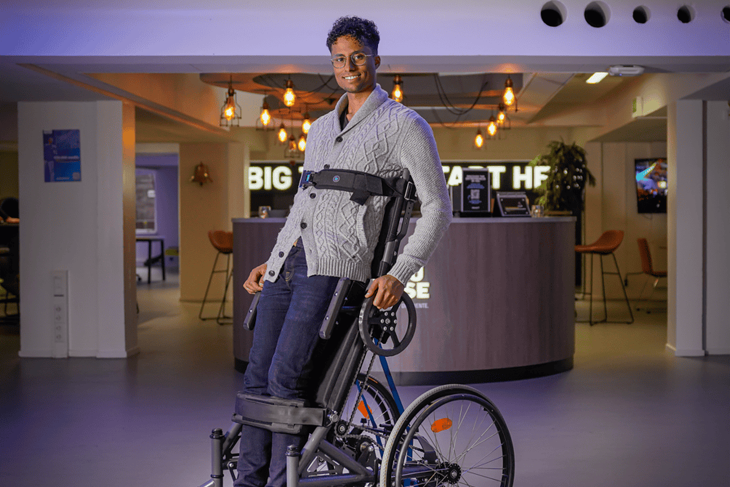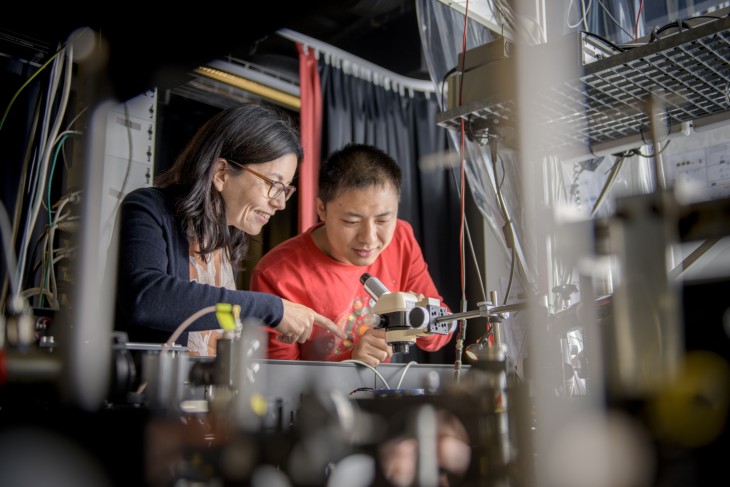After a special sports fragment, the PhD students get straight to work. Using software, they cut out the athletes from the television footage. The cut-out athletes are converted into images of tiny pixels measuring three hundred by three hundred nanometres. The students ‘draw’ those pixels onto a chip the next day in the Nanolab.
Nano-scale colouring
The drawing is done using a technique called electron beam lithography. A beam of electrons shoots tiny dots into a light-sensitive layer. You can compare this to the ‘dotting’ you might have done on a colouring page as a kid. The only difference is that the electron beam can make extremely small dots, which means the structures can also become a lot smaller.
With all the dots in the right place, it is time to finally capture the microathletes permanently. In a special device, a small layer of metal is applied to the entire surface of the chip. This layer of metal is about sixty nanometres thick. Smaller than many viruses. That's so thin that you need over 1,500 of these layers to get to the thickness of a human hair.
Now it's time to wash away the light-sensitive layer again, as it was still underneath the metal layer. As the electron-sensitive layer is washed away, the metal remaining on it also disappears. Only the metal where the structures are written remains. The top nanoscale athlete has been immortalised.
New materials
Electron beam lithography can be used to make small devices to investigate the properties of new materials. This allows researchers to see very precisely whether the material's properties are suitable for new applications in, for instance, electronics and photonics. The technique can also be used to create designs for new sensors for blood tests, for example. At the University of Twente, they specifically study materials that are interesting for more efficient data transport. This will hopefully make your smartphone even faster and more energy-efficient in the future.
Athlete-on-a-chip
The athlete-on-a-chip is now finished, but have yet to actually deliver the top performance. And - just like at the Olympic Games - that needs to be well captured in images. Instead of dozens of cameras, the students use an electron microscope. That microscope ‘feels’ a beam of electrons across the surface and can therefore also get a good look at the nano athletes. The students take a picture of each image from the original video clip and paste them together like a stop-motion video. The same grand feat, but now on a small scale.

